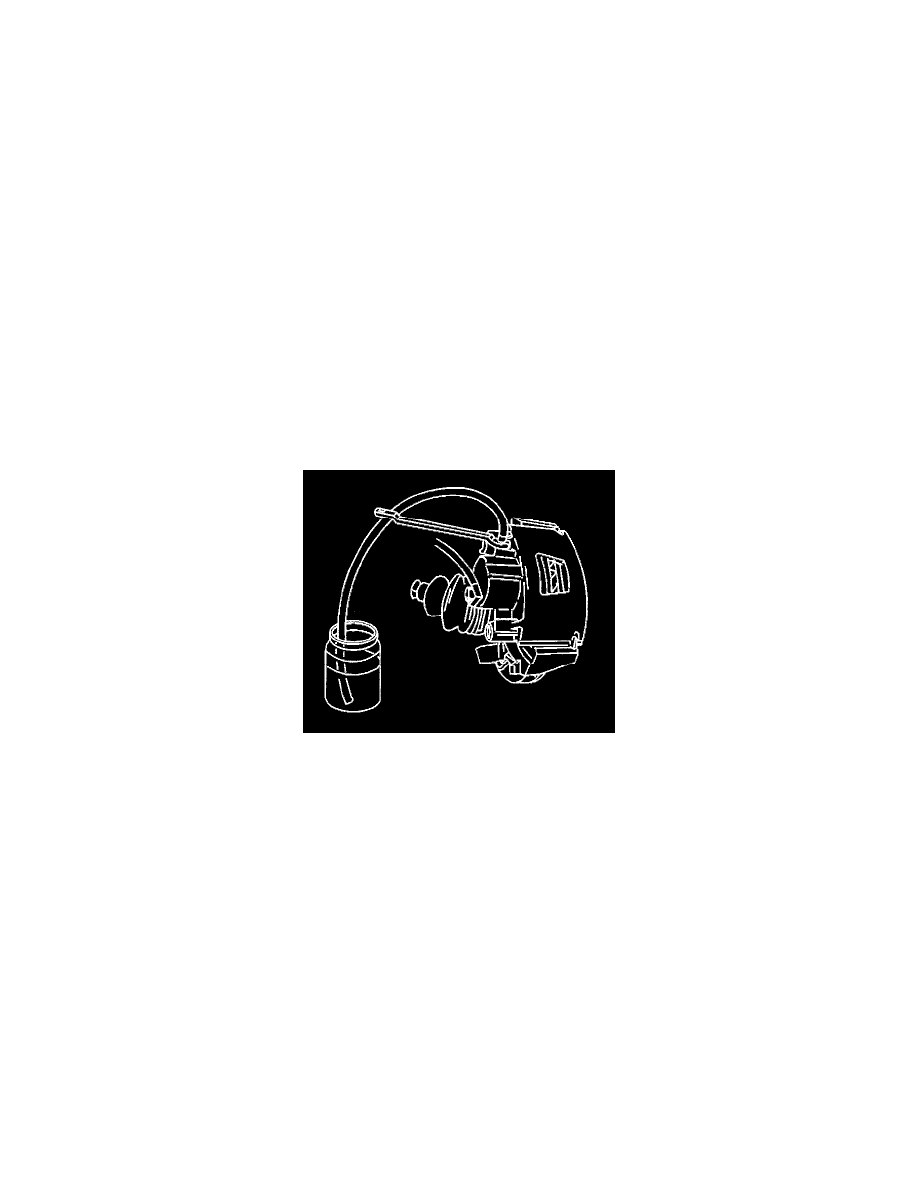Aurora V6-214 3.5L VIN H SFI (2001)

Brake Bleeding: Service and Repair
Pressure Bleeding Procedure
Hydraulic Brake System Bleeding
^
Tools Required
-
J29532 Diaphragm Pressure Bleeder
-
J35589-A Brake Pressure Bleeder Adapter
Caution: Do not move the vehicle until a firm brake pedal is obtained. Air in the brake system can cause loss of brakes with possible
personal injury.
Caution: Use only SUPREME 11 or equivalent DOT 3 brake fluid from a clean, sealed container. Do not use fluid from an open container
that may be contaminated with water. Improper or contaminated fluid will result in damage to components or loss of braking, with possible
personal injury.
Notice: Avoid spilling brake fluid on any of the vehicle's painted surfaces, wiring, cables or electrical connectors. Brake fluid will damage paint and
electrical connections. If any fluid is spilled on the vehicle, immediately flush the area with water to minimize the potential for damage.
Notice: If any brake component is repaired or replaced such that air is allowed to enter the brake system, the entire bleeding procedure must be
followed.
Notice: Prior to bleeding the brakes, the front and rear displacement cylinder pistons must be returned to the topmost position. The preferred method
uses a Scan Tool to perform the rehoming procedure. If a Scan Tool is not available, the second procedure may be used, but it is extremely important
that the procedure be followed exactly as outlined.
1. Apply the brakes several times with the engine off to remove the vacuum reserve.
2. Remove the master cylinder reservoir cap. Replace it with the J35589-A.
3. Charge the bleeder to 210 - 245 kPa (30 - 35 psi).
4. Connect the hose to the J35539-A.
5. Raise the vehicle and support. Refer to Vehicle Lifting.
6. If it is necessary to bleed all of the brake calipers, the following sequence should be used:
6.1.
Right rear
6.2.
Left rear
6.3.
Right front
6.4.
Left front
7. Place the proper size box end wrench, or equivalent, over the brake caliper bleed screw. Attach a clear tube over the screw and allow the tube to
hang submerged in a clear container partially filled with brake fluid.
8. Open the brake caliper bleed screw at least 3/4 of a turn and allow the brake fluid flow to continue until no air is seen in the brake fluid. Apply
intermittent pressure to the brake pedal while pressure bleeding.
Notice: Refer to Fastener Notice in Service Precautions.
9. Close the brake caliper bleed screw.
Tighten the brake caliper bleed screw to 13 Nm (115 inch lbs.).
10. Repeat steps 6 through 8 until all of the calipers have been bled.
11. Lower the vehicle.
12. When pressure bleeding is completed, bleed the brake system using a Scan Tool.
13. Remove the brake bleeding equipment from the master cylinder.
